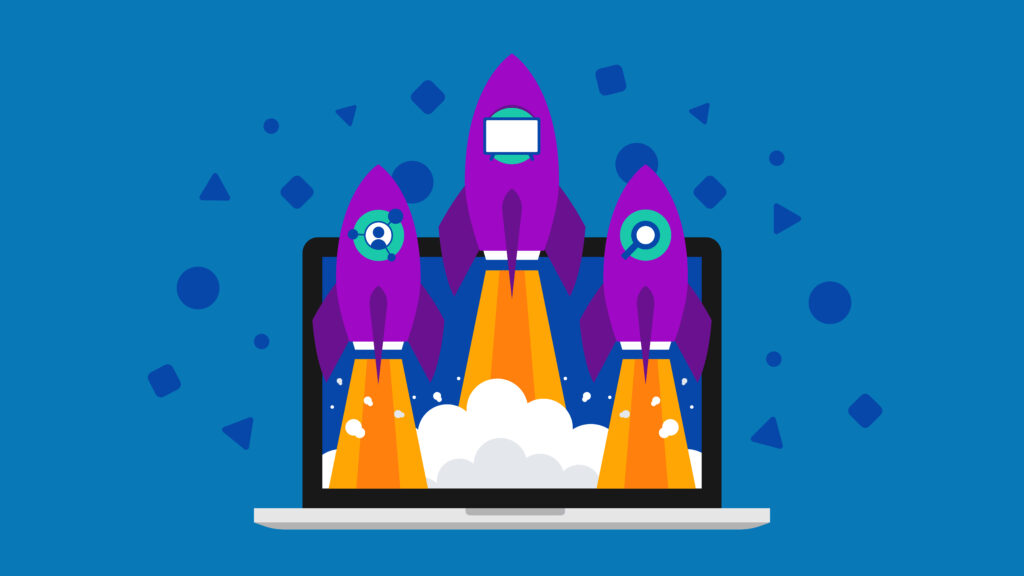We’re Bringing Real-World Measurement to Real-Time Reporting — Introducing Offline Attribution
by Melissa Yap
3 Min Read
CES 2024: Stagwell (STGW) and MNTN Announce Partnership in Unified Performance SolutionsLearn More

4 Min Read
Digital marketing is vital to the success of businesses around the world. But there’s still a superpower you might be missing out on. Leading performance marketers are equipping their teams with Connected TV—and looking like superheroes (no wild origin story necessary) in the process.
Recently, Ali Haeri and Jon Zucker, MNTN’s Senior Vice President of Marketing and Senior Product Marketing Manager, respectively, joined Search Engine Land for a two-part discussion on how CTV positively impacts other marketing channels. Let’s walk through some key points you don’t want to miss.
As folks continue canceling their cable subscriptions and replacing them with streaming services, advertisers are following them. But lots of brands are hesitant to make the switch.
In the past, television advertising wasn’t conducive to performance. Instead, it was a broad channel that brands used to spread introduction-level messaging. Thankfully, CTV has become more advertiser-friendly.
With new advancements and capabilities, advertisers can capitalize on performance from the biggest screen in the house. Now, television is a fully targetable, measurable performance marketing platform—a concept that was once unfathomable for linear TV advertisers.
CTV joins paid search and social media to round out the essential digital marketing trio. With similar features, the modern television advertising platform seamlessly integrates into your existing strategies, allowing you to optimize for your business goals.
When CTV is added to this omnichannel marketing mix, its targeting, measurement, and non-skippable messaging create a halo effect that can improve ad impact across other channels. With CTV, performance, SEO, and PPC marketers (among others) can produce better results across all three platforms than ever before.
In 2022, over 74% of US adults used an internet-connected device while they watched television. Clearly, CTV is a cross-device experience, and we see this come to life through the halo effect. One way this happens is through a customer watching your brand’s ad on television and then deciding they want to know more. They might turn to the device in their hand to look for your company on search engines or social media.
This overall increase allows teams to crush their KPIs and uncover new opportunities that lead to more revenue for the business. Since consumers are taking an omnichannel approach to purchasing, a wider digital presence helps make sure brands can reach customers across platforms.
We can spend all day telling you that CTV’s halo effect is an incredible way for marketers to boost their search and social. (Seriously, it is.) But you need proof. Let’s take a look at the numbers:
After just 30 days, our research found that MNTN’s halo effect produced 4% stronger conversion rates for paid social and 2% stronger conversion rates for paid search.
The longer you keep this marketing mix going, the more powerful the benefits become. After 90 days, MNTN’s halo effect produced 9% stronger conversion rates for paid social and 22% stronger conversion rates for paid search.
The quality of the leads increases, as well. Since you’re reaching customers at more opportune times, the halo effect generates:
While these numbers might vary a bit from brand to brand, CTV has the ability to boost your overall brand awareness, while driving increases in your paid search and social results.
But wait—there’s more!
Sorry this has become a late-night infomercial…but actually? We’re not sorry. That’s how powerful CTV ads can be. With effective content tailored to your audience, you can shorten, revise, and reuse it across channels, giving your marketing videos (and marketing budget) more life.
CTV’s digital format means it’ll feel familiar to any marketers who have used paid search or social. Much like the other key digital marketing tools, CTV allows you to target your audience and track outcomes.
Setting up CTV campaigns follows the same core principles as any paid social campaign, including:
With these (and additional) features, it’s an ideal performance channel you can use to optimize your existing strategy.
This superhero-themed blog wouldn’t be complete without a mention of the arsenal you need to make this all happen. You’ve got to pick the right gear before your team hands you a cape, right?
Not all CTV platforms have the capabilities to target the right consumers and measure outcomes, which means they can’t all produce the best halo effect (or one at all). To learn more about finding the right CTV solution and becoming your team’s CTV superhero, watch Haeri’s session here and Zucker’s session here.